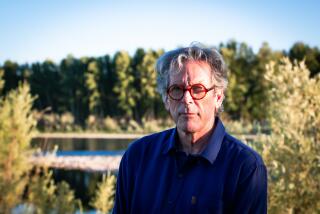FICTION
- Share via
THE GIVING EARTH: A John G. Neihardt Reader, Edited by Hilda Neihardt Petri (University of Nebraska Press: $25; 300 pp.) John G. Neihardt (1881-1973) is best remembered for “Black Elk Speaks,” his ghostwritten autobiography of a Sioux holy man who participated in the Ghost Dance revival and fought at Wounded Knee. This sampler of Neihardt’s poetry and prose won’t change posterity’s judgment--”Black Elk” remains his most significant work--but it does resurrect the outlines of a long and varied literary career.
Born when the West was still wild (“The Giving Earth” includes his account of a boat trip down the untamed Missouri River in 1908) and surviving to witness (and sympathize with) the student protests of the 1960s, Neihardt clearly was a strong and original personality. This book is evidence, though, that without genius, even strong and original personalities can barely dent the literary conventions of their time.
Neihardt began as a lyric poet, with echoes of Emerson and Whitman, then wrote short stories influenced by Twain, Crane, Norris and London. He devoted nearly 30 years to “A Cycle of the West,” a series of epic poems in rhyming couplets--”The Song of Three Friends,” “The Song of Hugh Glass,” “The Song of Jed Smith,” “The Song of the Indian Wars,” “The Song of the Messiah”--whose shrewd psychology and scrupulous observation of nature struggle to transcend their old-fashioned form.
What this book does, finally, is show the elements in Neihardt that came together in “Black Elk.” The Nebraskan had mystical leanings, a love of the land, a heroic conception of individual character and a deep respect for Indians and their culture. Even the 19th-Century flavor of his prose fit the voice of Black Elk, who, according to Neihardt’s daughter, Hilda, announced when the two men first met in 1931: “He has been sent to learn what I shall teach him.”
More to Read
Sign up for our Book Club newsletter
Get the latest news, events and more from the Los Angeles Times Book Club, and help us get L.A. reading and talking.
You may occasionally receive promotional content from the Los Angeles Times.









